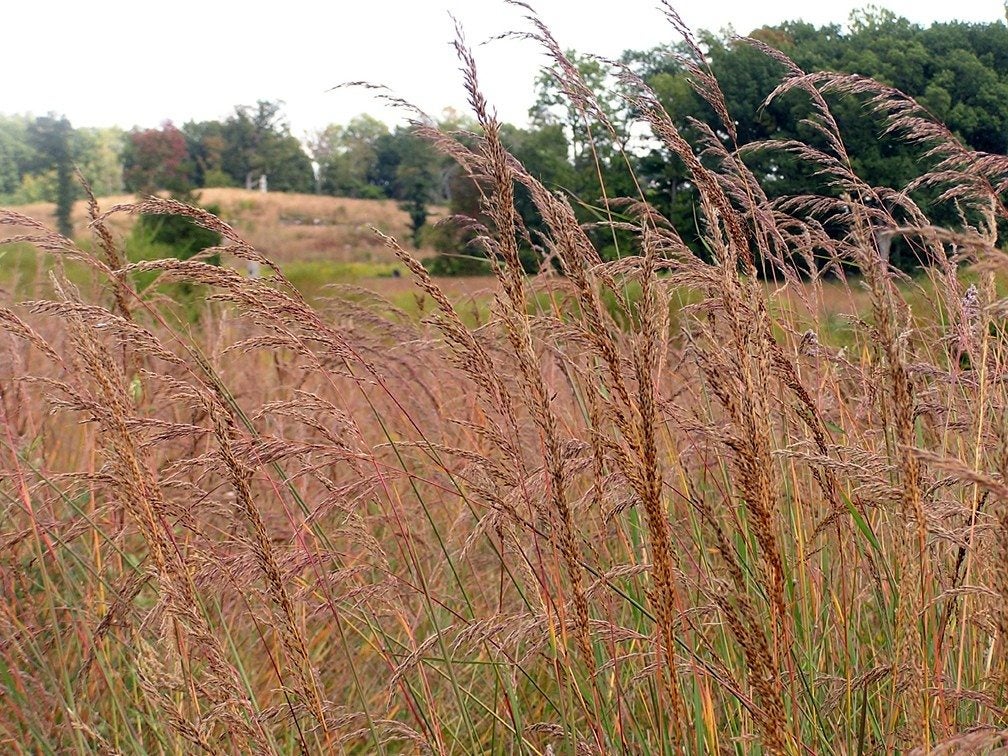Indian Grass Care - Learn About Indian Grass Planting In Home Garden


Whether native or exotic, tall or short, annual or perennial, clumped or sod-forming, grasses can be used in many areas of the garden to augment or add drama to a landscape. Grasses can form borders, hedgerows, screens, or add to a native garden. Grasses are alluring additives to the garden with their ornate foliage, majestic plumes, and graceful flower clusters. Indian grass, Sorghastum nutans, is an excellent choice to bring motion and dancing foliage to your home landscape. Indian grass care is minimal and a perfect choice for native gardens where light and wind create magical movement and dimension.
Indian Grass (Sorghastrum Nutans)
A native of North America, one of the most interesting of the grasses is the Indian grass. Indian grass, Sorghastrum nutans, is a warm-season clump-forming type of grass still found in areas of the Midwest amongst the grand “tall grass” prairies of that region. Ornamental Indian grasses are known for their height and produce spectacular ornamental specimens. The leaves of ornamental Indian grass are 3/8 inch (1 cm.) wide and 18 inches (45.5 cm.) long with thin tips and glabrous surfaces. Indian grass leaves' most distinguishing characteristic is its “rifle-sight-shaped” ligule. A perennial, Indian grass has a large habit of growth and matures to a height of up to 6 feet (2 m.) with erect 2 ½ to 5 foot (1 to 1.5 m.) tufts. Planting Indian grass in the landscape provides foliage of a burnt orange shade in autumn and a single narrow plume-shaped panicle of golden brown in late summer lasting until early winter.
Planting Indian Grass
Useful in mass plantings, Indian grass prefers full sun and is considered drought and heat tolerant. Ornamental Indian grass will do well in a variety of soil conditions from sandy to clay and acidic to alkaline, although it truly thrives in deep, moist garden loam. Indian grass reseeds readily; however, may also be propagated through the division of clumps or roots. The seed for Indian grass is also commercially available. Indian grass planting makes an excellent ornamental border, naturalized garden, and it is especially useful to stabilize soil in areas of erosion. Indian grass is highly nutritious and enjoyed by both domestic and wild grazing animals as well.
Indian Grass Care
Found in its native state, Indian grass typically grows in well-drained, floodplain prairies and alongside low-elevation, riparian areas along with related species such as:
The short rhizomes of the Indian grass begin growing in late spring and continue to add drama to the garden landscape through early winter. Indian grass planting in overgrazed areas increases the tilth of compacted soils. Whether you broadcast seed or plant individual grasses, provide them with moderate water while they establish. Thereafter, little extra care is required and the plant will send new shoots out every spring for a fresh-looking clump of foliage.
Gardening tips, videos, info and more delivered right to your inbox!
Sign up for the Gardening Know How newsletter today and receive a free copy of our e-book "How to Grow Delicious Tomatoes".

Bonnie Grant is a professional landscaper with a Certification in Urban Gardening. She has been gardening and writing for 15 years. A former professional chef, she has a passion for edible landscaping.
-
 Try The Trend – Turn Any Bed Into A Keyhole Garden With This Clever In-Ground Composter
Try The Trend – Turn Any Bed Into A Keyhole Garden With This Clever In-Ground ComposterKeyhole gardening is an efficient and sustainable practice that saves space. Get started on this DIY project quickly and easily with an in-ground composter.
By Bonnie L. Grant
-
 4 Superfast Composting Methods: Turn Waste Into Garden Gold In 30 Days Or Less
4 Superfast Composting Methods: Turn Waste Into Garden Gold In 30 Days Or LessTry the fastest composting methods to turbocharge your pile and transform kitchen scraps and garden waste into finished compost in just a few weeks.
By Mary Ellen Ellis